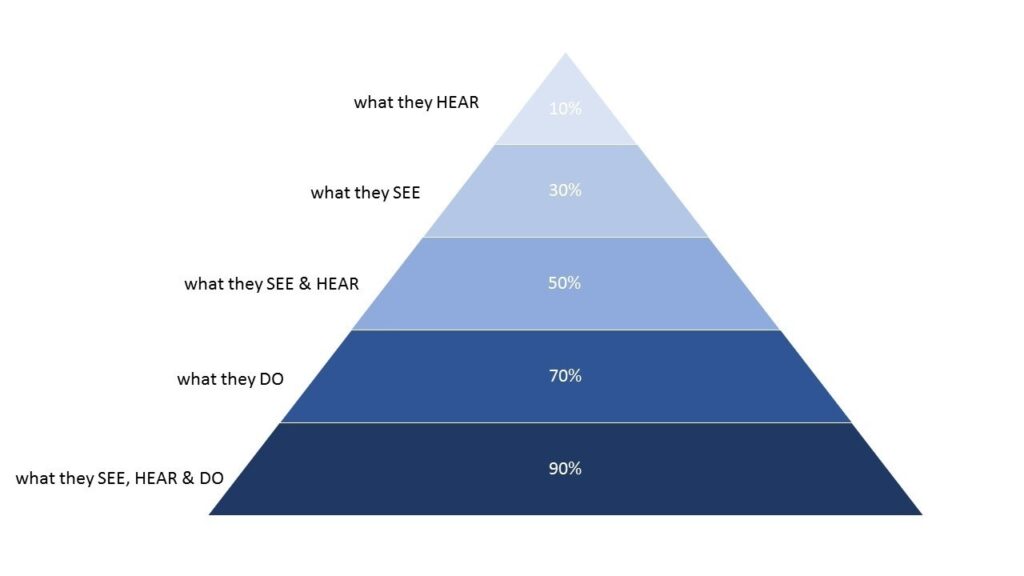Many Business Continuity professionals (like me) morphed into the industry, versus making a deliberate career decision. We come from a variety of backgrounds, skills and knowledge which creates a deep and broad collective of knowledge!
As Business Continuity professionals, we are called upon to conduct training to organization’s and other professionals. What are some of the characteristics of an effective training session?
- Communicate the training objectives before the event. Make sure they understand:
- Why they were selected to be trained
- What they can expect to learn
- Expectations of what they will do with this new knowledge
- Incorporate humor to make the session more entertaining. This helps to engage the participants. If they aren’t engaged, they aren’t learning. Include a funny video, or graphic in your materials. Incorporate fun aspects into your case studies.
- Set the stage for learning by starting out with a fun learning activity.
- The 90:20:8 Rule
- Adults can only listen with understanding for 90 minutes
- They only listen with retention for 20 minutes
- They need to be involved every 8 minutes
Related: PreparedEx Podcast – An Interview with Kathleen Lucey
Consider this when planning your session. Plan breaks, discussions and periodic engagement points to help keep them involved and learning.
- One of the biggest challenges is to involve them every 8 minutes. Here are some tactics that I use in my sessions:
- Ask “How many of you have . . . “ and ask them to raise their hand or stand up
- Break into small groups to discuss a specific topic, and have groups report out
- Ask them to give examples of their experiences
- After teaching a template or a tool, have them spend a few minutes practicing
- Scatter “quizzes” throughout the training. This can even be done as a contest or game with prizes
- Your training should include a variety of material to appeal to visual, auditory and kinesthetic senses.
- Visual: colorful charts, graphics, pictures
- Auditory: Listen to the concept, then discuss with others
- Kinesthetic: hands on activity
The more senses that you engage in a session, the higher the rate of retention will be.
Adults learn by . . . .
How do you address these different learning styles?
- When you design and deliver your training, consciously create a variety of approaches that will appeal to the various types of learners, and incorporate techniques that will engage a variety of senses.
As you prepare for your next training session, reflect on sessions that you have attended and what you liked (and did not like) about the approach. Consider these lessons (to be) learned along with the concepts in this article to develop and deliver a winning experience for your class.





